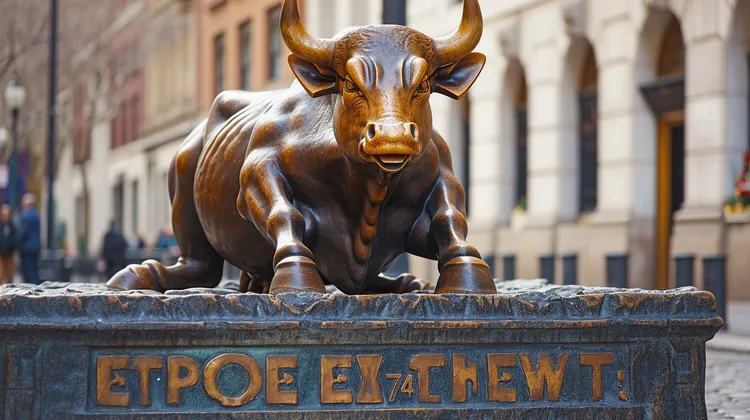
Bitcoin ETF Approval Sparks $7K Sell-off in BTC
In the volatile world of cryptocurrency, the dynamics of supply, demand, and investor sentiment can send ripples across the market with incredible speed. The recent events surrounding the Spot Bitcoin Exchange-Traded Fund (ETF) provide a case study in the complexities of crypto trading and the phenomenon known as the “sell-the-news” event. When the Spot Bitcoin ETF was finally given the green light after much anticipation, one might have expected Bitcoin’s price to soar. In a counterintuitive turn of events, Bitcoin’s value plummeted by an astonishing $7,000 in just two days. This article delves into the factors that may have contributed to this occurrence, analyzing whether this was indeed a “sell-the-news” event or a convergence of other market forces.
The concept of a Spot Bitcoin ETF has been long awaited by the cryptocurrency community. Such a fund would allow investors to gain exposure to Bitcoin without the complexities of managing wallets or navigating the sometimes-dubious security of exchanges. It promised to bring an influx of institutional money into the space, legitimizing Bitcoin as an asset class and potentially stabilizing its volatility. When the U.S. Securities and Exchange Commission (SEC) finally hinted at an approval after several years of proposals and rejections, the price of Bitcoin initially responded with an upward trend, as market participants anticipated a major bullish movement.
The expectations soon took a sharp turn. With the official confirmation of the Spot Bitcoin ETF approval, Bitcoin’s price did not continue its climb. Instead, it took a nose dive, shedding thousands off its price in an incredibly short span. This event left many market observers and participants puzzled—why would an ostensibly positive development for Bitcoin lead to such a massive sell-off?
The “sell-the-news” phenomenon offers one potential explanation. This occurs when the price of an asset rises on rumors and expectations of a significant event but then falls after the news becomes public. In this scenario, the saying “Buy the rumor, sell the news” aptly describes the market participants’ actions. Traders may have anticipated the approval for so long that once it happened, they took profits, believing that the actual event wouldn’t live up to the hype or that everything positive was already priced in. This herd-like behavior can lead to a cascading effect, with the initial sell-off triggering stop losses and causing a more significant decline as panic selling ensues.
It’s worth considering the broader market conditions at the time of the Spot Bitcoin ETF approval. Often, external factors such as regulatory crackdowns, macroeconomic news, or shifts in risk sentiment across global financial markets can have a profound impact on cryptocurrency prices. If the traditional financial markets were experiencing a downturn or if there were concerns about regulatory actions against cryptocurrencies in a major economy, such factors could exacerbate the selling pressure on Bitcoin following the ETF news.
Another aspect contributing to the sell-off might have been the positioning of large investors or “whales” in the Bitcoin market. These players have the capacity to move the market significantly with their trades. If they decide that the news event is the peak of market optimism, they may decide to liquidate large positions, causing a sharp downward movement in the price.
The structure of the crypto market itself could play a role. Unlike traditional markets, the crypto market operates 24/7, with high leverage and a relatively lower level of liquidity in comparison to other asset classes. This means that price swings can be more pronounced, especially during times of high volatility.
Volatility has always been a hallmark of Bitcoin and the broader cryptocurrency market, and the lead-up to the approval of a Spot Bitcoin ETF is no exception. This high-stakes atmosphere may have exacerbated the sell-the-news effect, with traders quick to react to any suggestion of a market peak. The approval could have come at a time when Bitcoin was technically overbought, with many technical indicators signaling that a correction was due. The subsequent selling, therefore, might be seen as a normal market retracement after a period of strong gains.
It is important not to overlook the psychological aspects of trading. The hype surrounding the Spot Bitcoin ETF likely attracted many new and inexperienced investors who may be quicker to panic and sell at the first sign of trouble—contributing to the sharp downturn in the aftermath of the announcement.
While it may be tempting to label the Spot Bitcoin ETF approval as a straightforward “sell-the-news” event, the reality is likely more complex. A combination of heightened expectations, profit-taking, market conditions, whale movements, inherent crypto market structure, technical positioning, and trader psychology all played a part. In the world of cryptocurrency investing, where the interplay between perception and reality is so critical, even seemingly positive news can sometimes lead to unexpected outcomes. As the dust settles on this $7,000 tumble, the episode serves as a potent reminder of the unpredictable nature of the market and the perpetual dance between anticipation and actuality.